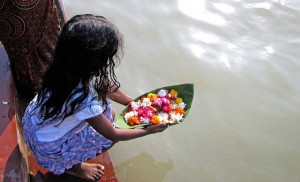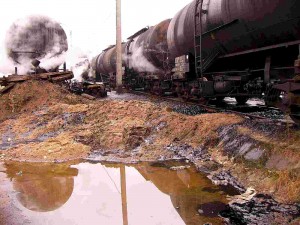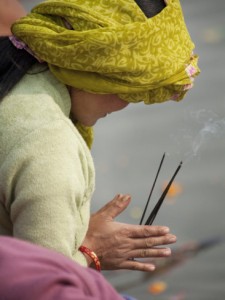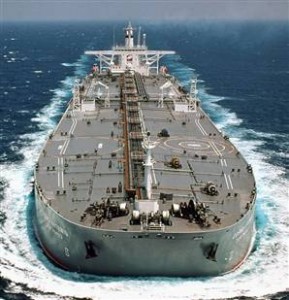 In Hindu tradition, our entire environment is regarded as sacred and there are specific instances which provide important symbols for this. Witness the reverence Hinduism has for the great rivers – for example the sacred Ganga river – for their life giving and life sustaining qualities, the mountains which source these life giving forces and provide protection and indeed the whole land which is regarded as the Mother in addition to the regard for the millions of plants and animals.
In Hindu tradition, our entire environment is regarded as sacred and there are specific instances which provide important symbols for this. Witness the reverence Hinduism has for the great rivers – for example the sacred Ganga river – for their life giving and life sustaining qualities, the mountains which source these life giving forces and provide protection and indeed the whole land which is regarded as the Mother in addition to the regard for the millions of plants and animals. The Rama Sethu land formation (also known as Adam’s Bridge), linking southern India to northern Sri Lanka, is an example of such a sacred symbol which is revered in Hindu tradition as the bridge constructed by Lord Rama and his army to cross into Lanka and defeat the demon Ravana.
The Rama Sethu land formation (also known as Adam’s Bridge), linking southern India to northern Sri Lanka, is an example of such a sacred symbol which is revered in Hindu tradition as the bridge constructed by Lord Rama and his army to cross into Lanka and defeat the demon Ravana.
India in the recent years has revived the idea of having the Sethusamudram canal built between itself and Sri Lanka. This means digging a big hole through the Rama Sethu Bridge and effectively destroying it.
The economic benefits are said to be enormous as it will allow maritime vessels to no longer be compelled to circumnavigate Sri Lanka, but sail directly between the two countries, thus boosting trade. In practice it will save at most just a day in travel time. There are also high economic costs – estimated at hundreds of millions of Rupees which will probably escalate into billions by the time the project is completed.
But there are non-economic costs too, the first of which is the offence caused to Hindus for destroying a traditional place of pilgrimage and worship. This is comparable to the on going protests over a sacred mountain used as a place of worship and pilgrimage by the Native American people in the US .
 In this day and age we are becoming increasingly aware of the damage being done to our environment through mass industrialisation, increasingly pollution and harmful emissions, the rise of international travel, exploitation of natural resources and destruction of natural habitats and ecosystems.
In this day and age we are becoming increasingly aware of the damage being done to our environment through mass industrialisation, increasingly pollution and harmful emissions, the rise of international travel, exploitation of natural resources and destruction of natural habitats and ecosystems.
With this increasing awareness is also the recognition that we must do more to protect our environment and change our behaviour to encourage the renewal of our planet rather than its exploitation and destruction.
 Of course once upon a time Hinduism was ridiculed for her worship of nature and the sacred environment but today it is clear that a more ecological approach is needed across the world if we are to save our planet for future generations.
Of course once upon a time Hinduism was ridiculed for her worship of nature and the sacred environment but today it is clear that a more ecological approach is needed across the world if we are to save our planet for future generations.
The canal construction project is being marketed as something that will be beneficial to the poor fishing communities. Although it is not exactly clear how the tickle down effect from a big construction project helps the village economy. If anything, the destruction and disturbance of the natural habitat is only going to lead to the extinction of this ancient way of life and pave the way for the takeover by big business.
 While the aim of the project is to open a canal for shipping lanes it will also lead to more industrial scale commercial fishing which serve to drive out the local fishing communities or make them instruments of corporate slavery. The marine environment is already being wreaked in many places by the use of “bottom trawling” fishing methods which destroy the sediment and disrupt floor dwelling organisms. Both the construction of this canal and subsequent fishing patterns will likewise prove to be an ecological disaster for the environment.
While the aim of the project is to open a canal for shipping lanes it will also lead to more industrial scale commercial fishing which serve to drive out the local fishing communities or make them instruments of corporate slavery. The marine environment is already being wreaked in many places by the use of “bottom trawling” fishing methods which destroy the sediment and disrupt floor dwelling organisms. Both the construction of this canal and subsequent fishing patterns will likewise prove to be an ecological disaster for the environment. The region of the Palk Strait and Mannar Gulf has coral reefs with some of the richest biodiversity and is the home to about 400 endangered marine species including turtles, dolphins, and many fish.
The region of the Palk Strait and Mannar Gulf has coral reefs with some of the richest biodiversity and is the home to about 400 endangered marine species including turtles, dolphins, and many fish.
Like many other coral reefs that have disappeared it would be a loss to future generations if this one too was to suffer the same fate.
 Arguments that the canal will not cause ecological fallout are unconvincing when one considers that coral takes many years to regenerate and are some of the most fragile systems where any change to the balance can be hugely damaging. Once the coral goes the marine life that depends upon it is also wiped out. Again regeneration will take many years to take effect, and may not happen at all.
Arguments that the canal will not cause ecological fallout are unconvincing when one considers that coral takes many years to regenerate and are some of the most fragile systems where any change to the balance can be hugely damaging. Once the coral goes the marine life that depends upon it is also wiped out. Again regeneration will take many years to take effect, and may not happen at all. All of this is before we even think about what happens when one of these huge cargo ships or oil tankers has an accident and releases toxic waste into the sea. What happens to the more than 4000 species that exist along the Rama Sethu and the local shoreline and communities that depend on the seas for their existence? What happens to the area used for dumping the estimated 62 millions tonnes of silt that need to be excavated for this project? Unfortunately this time round, the ecological and Green lobby seem to have averted their gaze, in stark contrast to other parallel cases.
All of this is before we even think about what happens when one of these huge cargo ships or oil tankers has an accident and releases toxic waste into the sea. What happens to the more than 4000 species that exist along the Rama Sethu and the local shoreline and communities that depend on the seas for their existence? What happens to the area used for dumping the estimated 62 millions tonnes of silt that need to be excavated for this project? Unfortunately this time round, the ecological and Green lobby seem to have averted their gaze, in stark contrast to other parallel cases. However, Hindus should not be surprised at the apathy of political groups and governments which are more interested in votes and commercial interests in their typical Ravan mentality. While it is the Congress and Communists overseeing the current destruction of the Rama Sethu, we should not forget that it was the BJP who began the project in their last term in power.
However, Hindus should not be surprised at the apathy of political groups and governments which are more interested in votes and commercial interests in their typical Ravan mentality. While it is the Congress and Communists overseeing the current destruction of the Rama Sethu, we should not forget that it was the BJP who began the project in their last term in power.
So this is something which goes across the political spectrum. It’s time for the people to stand up and let the politicians and big business know that we will not let our heritage, religious beliefs and environment be trampled over like this.
 This episode is in stark contrast to the morals and symbolism provided by the Ramayana which tells the story of how divinity, humanity and the animal kingdom combined forces in natural harmony to build the Rama Sethu bridge at a time of crisis .
This episode is in stark contrast to the morals and symbolism provided by the Ramayana which tells the story of how divinity, humanity and the animal kingdom combined forces in natural harmony to build the Rama Sethu bridge at a time of crisis .

No comments:
Post a Comment